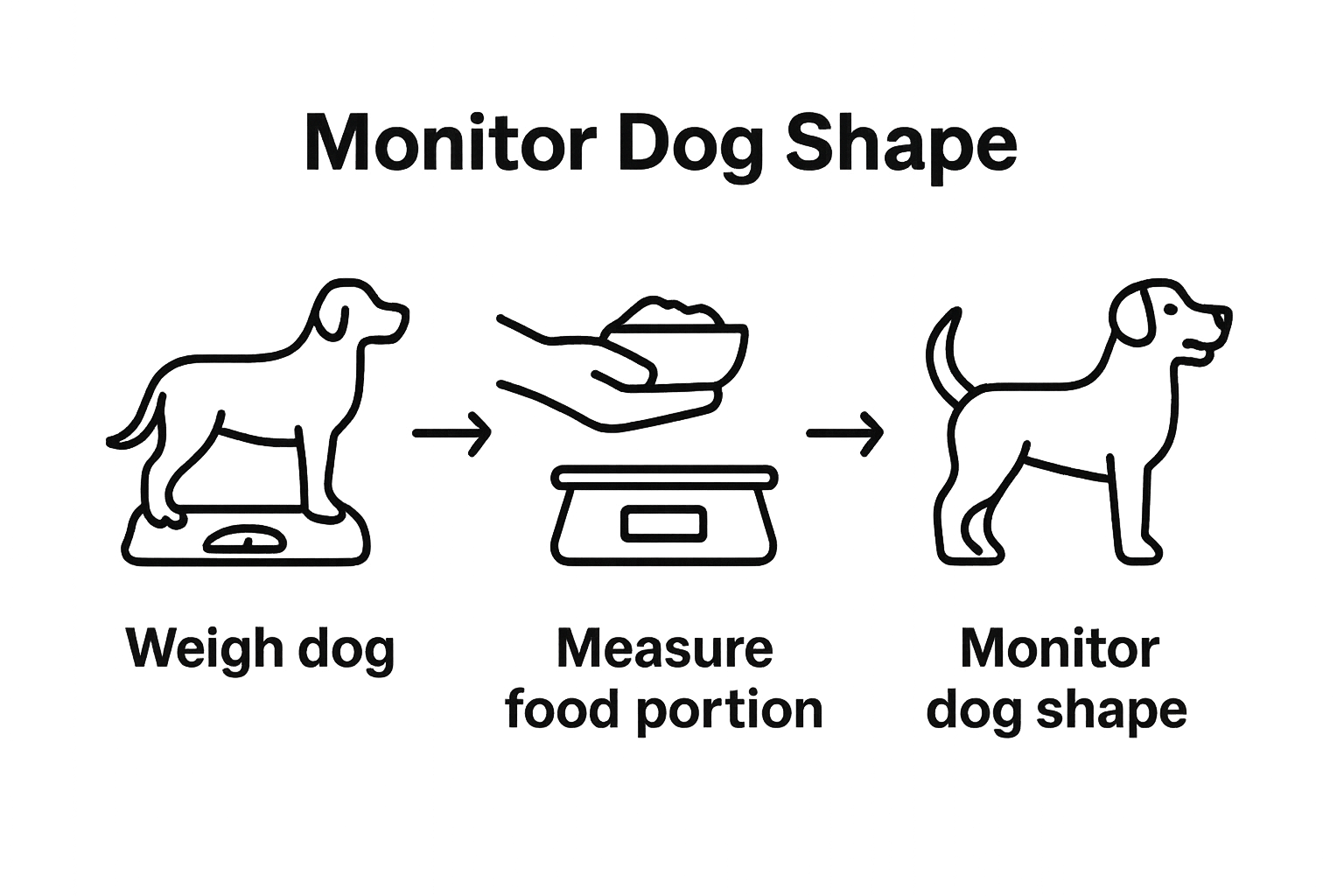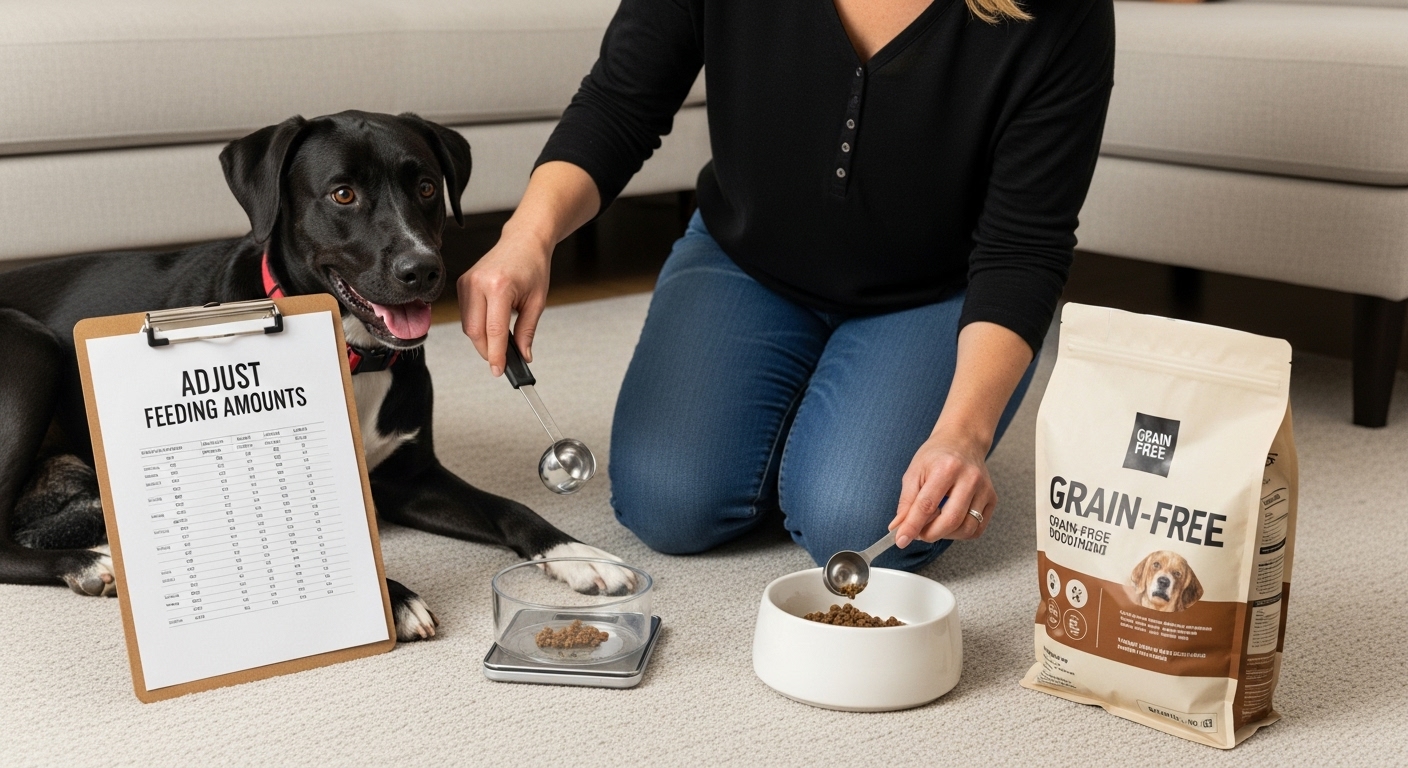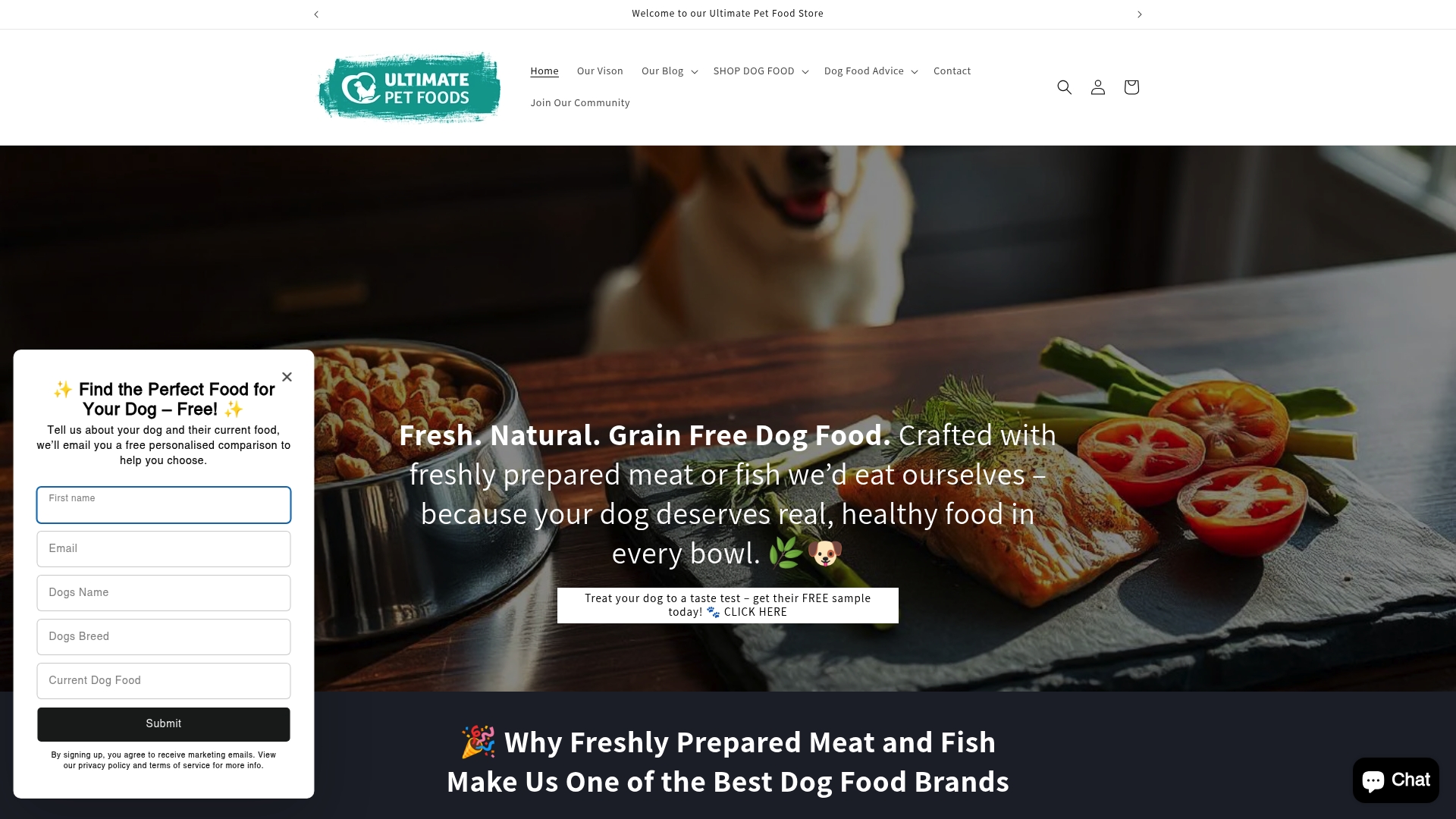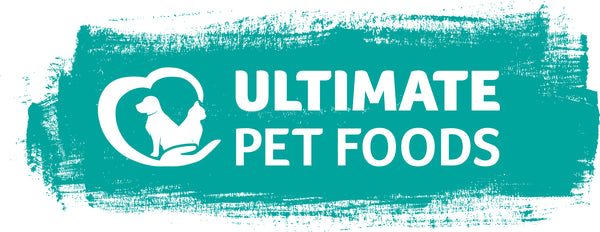
How Much to Feed Dog: A Complete Guide to Nutrition
Share
Feeding your dog the right amount sounds simple, and it is one of the most important choices you can make for their long-term health. Most owners do not realise that a dog’s nutritional needs can shift dramatically based on age, breed, and activity level. Surprising as it may be, even a few extra grams of food a day can slowly lead to health issues that are completely preventable with the right approach.
Table of Contents
- Step 1: Assess Your Dog’s Individual Needs
- Step 2: Calculate The Appropriate Portion Size
- Step 3: Choose Quality, Grain-Free Food Options
- Step 4: Monitor Your Dog’s Weight And Health
- Step 5: Adjust Feeding Amounts As Necessary
Quick Summary
| Key Point | Explanation |
|---|---|
| 1. Understand your dog’s unique needs | Assess age, weight, breed, activity, and health to tailor nutrition effectively. |
| 2. Calculate accurate portion sizes | Use a digital scale for precise measurements based on metabolic rate and activity level. |
| 3. Choose quality, grain-free food | Select foods with high-quality proteins and minimal fillers for optimal health benefits. |
| 4. Monitor weight and health regularly | Weigh your dog monthly and observe health indicators to adjust diet as needed. |
| 5. Adjust feeding amounts over time | Modify portion sizes based on age, activity level, and health changes to maintain balance. |
Step 1: Assess Your Dog’s Individual Needs
Understanding your dog’s unique nutritional requirements is the foundational step in developing an optimal feeding strategy. Every dog is different, and their dietary needs vary based on multiple critical factors. Your dog’s age, weight, breed, activity level, and overall health status will determine precisely how much and what type of food they require.
Begin by scheduling a comprehensive veterinary assessment to establish your dog’s baseline health profile. During this consultation, discuss your dog’s current weight, body condition, and any specific health concerns. A veterinarian can help you identify whether your dog falls into standard weight categories or requires a specialized nutritional approach. Some dogs might need modified diets due to conditions like diabetes, allergies, or metabolic disorders.
Carefully observe your dog’s current physical condition. Key indicators include their body shape, energy levels, coat quality, and muscle tone. Dogs with lean, well-defined muscle structures typically require different caloric intake compared to less active or overweight pets. For instance, a working border collie will have substantially different nutritional needs than a senior pug living in an apartment.
Weight management is crucial. Our guide on holistic dog nutrition provides additional insights into maintaining your dog’s optimal health through targeted feeding strategies. Measure your dog’s weight monthly and track any fluctuations. A healthy dog should maintain a consistent weight with minimal variations.

Consider these essential factors when assessing your dog’s individual nutritional needs:
- Current body weight and ideal target weight
- Age and life stage (puppy, adult, senior)
- Breed size and typical metabolic characteristics
- Daily activity and exercise levels
- Existing health conditions or dietary sensitivities
Remember that nutritional requirements are dynamic. What works for your dog today might need adjustment as they age or experience changes in health status. Regular veterinary check-ups and attentive monitoring will help you fine-tune their diet continuously, ensuring they receive optimal nutrition throughout their life stages.
Step 2: Calculate the Appropriate Portion Size
Calculating the right portion size is a critical component of maintaining your dog’s optimal health and preventing nutritional imbalances. The goal is to provide precisely the right amount of food that meets your dog’s energy requirements without causing weight gain or nutritional deficiencies.
Start by carefully examining the recommended feeding guidelines printed on your dog food packaging. These guidelines typically provide weight-based portion recommendations, but they are not absolute rules. Each dog metabolizes food differently, so you will need to adjust these recommendations based on your individual dog’s specific characteristics.
Utilize a digital kitchen scale for precise measurement, which allows you to weigh food portions accurately. Most veterinary nutritionists recommend measuring food by weight rather than volume, as cup measurements can vary significantly depending on the kibble size and density. A digital scale provides consistent and exact portion control, which is crucial for maintaining your dog’s ideal body condition.
Learn more about reading dog food ingredients to understand the nutritional content that impacts portion sizing. Consider factors like protein content, caloric density, and your dog’s activity level when determining the appropriate amount.
Calculate daily caloric requirements using a standard formula that considers your dog’s ideal weight, age, and activity level. Professional veterinarians often use the following basic calculation: Maintenance Energy Requirement = 70 x (Weight in kg)^0.75. However, this is a general guideline and should be fine-tuned based on your dog’s individual metabolism.
Important factors to consider when calculating portion sizes include:
- Current body weight and ideal target weight
- Metabolic rate and activity level
- Age and life stage
- Specific health conditions
- Quality and density of the dog food
Monitor your dog’s weight and body condition closely after implementing your calculated portion size. Adjust quantities incrementally if you notice weight gain or loss. Typically, you should be able to feel your dog’s ribs without a thick layer of fat, and they should have a visible waist when viewed from above. Regular veterinary check-ups can help you refine these measurements and ensure your dog remains in optimal health.
Step 3: Choose Quality, Grain-Free Food Options
Selecting the right dog food is more than just picking a brand off the shelf. Quality nutrition involves understanding ingredient composition, nutritional value, and your dog’s specific dietary requirements. Grain-free options have gained significant popularity among dog owners seeking optimal health solutions for their canine companions.
Begin by carefully examining food labels and ingredient lists. Look for whole protein sources listed as the first ingredients, such as freshly prepared meat or fish. Avoid products with ambiguous meat by-products or excessive filler ingredients. High-quality grain-free foods typically feature named protein sources like chicken, lamb, or fish as primary components, ensuring your dog receives essential amino acids and nutrients.
Consider your dog’s specific health profile when selecting grain-free options. Some dogs might have grain sensitivities or allergies, making grain-free diets particularly beneficial. Learn more about the benefits of grain-free diets to understand how these specialized nutrition plans can support your dog’s overall wellness.
According to research from the Food Standards Agency, pet food safety is paramount. Look for brands that demonstrate transparent sourcing and rigorous quality control processes. Premium grain-free foods often incorporate additional nutritional boosters like prebiotics, probiotics, and carefully selected botanical ingredients that support digestive health.
Key considerations when choosing grain-free dog food include:
- Protein source quality and origin
- Absence of artificial preservatives and fillers
- Presence of essential vitamins and minerals
- Alignment with your dog’s specific life stage requirements
- Digestibility and nutrient absorption potential
Remember that transitioning to a new diet should be gradual. Mix the new grain-free food with your dog’s current diet, incrementally increasing the proportion over 7-10 days. This approach helps prevent digestive upset and allows your dog’s system to adapt to the new nutritional profile. Monitor your dog’s energy levels, coat condition, and overall health during this transition to ensure the new diet supports their optimal wellness.
Step 4: Monitor Your Dog’s Weight and Health
Monitoring your dog’s weight and overall health is a continuous process that requires consistent attention and proactive management. Regular assessment helps prevent obesity, detect potential health issues early, and ensure your dog maintains optimal nutritional balance.
Establish a consistent weighing routine using a reliable digital scale. Weigh your dog monthly, preferably at the same time of day and under similar conditions. Record these measurements in a dedicated tracking log, noting any significant fluctuations. Visual and physical assessments are equally important. Run your hands along your dog’s sides to feel their ribs - you should be able to feel them without pressing too hard, but they should not be prominently visible.
Create the perfect dog feeding schedule to support consistent weight management. Adjust portion sizes incrementally based on your dog’s weight trends. If your dog is gaining weight, reduce daily food intake by 10% and increase exercise. Conversely, if they are losing weight unexpectedly, consult your veterinarian to rule out underlying health conditions.
Pay close attention to additional health indicators beyond weight. Observe your dog’s energy levels, coat condition, digestive regularity, and overall demeanor. Changes in these areas can signal nutritional imbalances or potential health concerns that require professional evaluation.
Key health monitoring parameters include:
- Monthly weight measurements
- Body condition scoring
- Energy and activity levels
- Coat and skin health
- Digestive consistency
- Dental and oral health
Consult your veterinarian if you notice sudden weight changes, unusual lethargy, alterations in appetite, or modifications in bathroom habits. These could indicate more significant health issues requiring professional intervention. A proactive approach to monitoring ensures your dog maintains optimal health and receives timely nutritional adjustments throughout their life stages.
Below is a checklist table summarising the essential parameters to monitor when tracking your dog’s weight and health, helping ensure a proactive approach to wellbeing.
| Parameter | Monitoring Frequency | What to Look For |
|---|---|---|
| Weight | Monthly | Consistent measurements, track trends |
| Body condition scoring | Monthly | Visible waist, easily felt ribs |
| Energy and activity levels | Ongoing | High/consistent energy, no lethargy |
| Coat and skin health | Ongoing | Glossy coat, no excessive shedding |
| Digestive consistency | Ongoing | Regular, firm stools |
| Dental and oral health | Monthly | Clean teeth, no bad breath |
Step 5: Adjust Feeding Amounts as Necessary
Feeding your dog is not a static process but a dynamic journey that requires continuous adaptation. Nutritional needs change throughout your dog’s life, influenced by factors such as age, activity level, health status, and metabolic changes. Understanding when and how to adjust feeding amounts is crucial for maintaining your dog’s optimal health and preventing nutritional imbalances.
Age plays a significant role in determining dietary requirements. Puppies, adult dogs, and senior canines have distinctly different metabolic needs. Younger dogs typically require more calories to support growth and high energy levels, while senior dogs often need fewer calories but more nutrient-dense foods. Learn expert tips for transitioning dog foods successfully to ensure smooth dietary adjustments during these life stages.
According to the RSPCA, feeding the right amount depends on multiple variables. Start by assessing your dog’s body condition every few weeks. Look for visual and physical indicators such as visible waistline, easily felt ribs without excess fat covering, and overall muscle tone. If your dog appears to be gaining or losing weight unexpectedly, this signals the need for portion size modifications.
Activity levels dramatically impact caloric requirements. Working dogs, highly active breeds, and those participating in regular exercise will need more substantial portions compared to sedentary companions. Conversely, dogs with reduced mobility or recovering from illness might require carefully calibrated, lower-calorie diets. Pay attention to your dog’s energy levels and adjust food quantities incrementally, typically in 5-10% increments.
Important considerations when adjusting feeding amounts include:
- Current body weight and condition
- Age and life stage
- Breed-specific metabolic characteristics
- Daily activity and exercise intensity
- Underlying health conditions
- Seasonal variations in activity
Consult with your veterinarian regularly to validate your feeding adjustments. Professional guidance ensures you’re making scientifically informed decisions about your dog’s nutrition. Remember that sudden, drastic changes can cause digestive upset, so always transition gradually. Observe your dog’s response to dietary modifications, watching for changes in weight, coat condition, energy levels, and overall well-being. Nutrition is a personalised journey, and what works perfectly for one dog might require slight modifications for another.

Take the Guesswork out of Feeding Your Dog
Are you struggling to determine the correct food portions or the right type of nutrition for your dog? Many owners share your concern. This guide has highlighted the importance of assessing your dog’s unique requirements, monitoring weight, and choosing quality grain-free food tailored to each life stage. Missing the mark on these details can lead to poor coat condition, low energy, or stubborn weight gain. That is why it is vital to choose highly nutritious, tailored food solutions as recommended throughout the article. You can explore our complete grain-free collections, designed for puppies, adults and seniors with specific needs like weight management and skin health.

Give your dog the advantage of carefully formulated meals made from fresh, high-quality ingredients. Visit Ultimate Pet Foods to discover the blend that suits your dog’s age and condition, whether you need nutritious puppy food for a growing canine or supportive formulas for senior dogs. The right nutrition starts now. Ensure your dog is always fed the best – take the next step today.
Frequently Asked Questions
How do I determine my dog’s ideal portion size?
To determine your dog’s ideal portion size, evaluate the recommended feeding guidelines on the dog food packaging and adjust based on your dog’s weight, activity level, and metabolism. It’s best to measure food by weight using a digital kitchen scale for precision.
What factors influence my dog’s nutritional needs?
Your dog’s nutritional needs are influenced by several factors, including age, weight, breed, activity level, and overall health status. Regular veterinary check-ups can help assess these needs as they evolve over time.
How can I ensure my dog transitions to a new diet smoothly?
To ensure a smooth transition to a new diet, gradually mix the new food with your dog’s current food over 7-10 days, increasing the proportion of the new food. This helps prevent digestive upset and allows your dog’s system to adjust.
Why is it important to monitor my dog’s weight and health regularly?
Regular monitoring of your dog’s weight and health is vital to prevent obesity, detect health issues early, and ensure your dog maintains a balanced nutritional intake. Changes in weight, energy levels, or coat condition may indicate the need for dietary adjustments.
Recommended
- Create the Perfect Dog Feeding Schedule for Optimal Health – Ultimate Pet Foods
- How to Choose Dog Food: A Step-by-Step Guide for Healthy Dogs – Ultimate Pet Foods
- Expert Tips for Transitioning Dog Foods Successfully – Ultimate Pet Foods
- 7 Best Foods for Small Breeds: A Guide for Pet Owners – Ultimate Pet Foods
